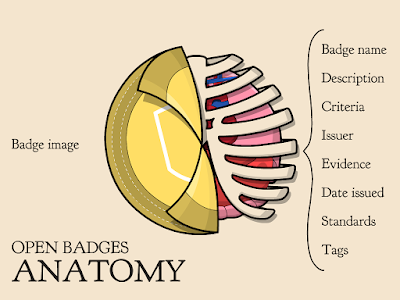It can be difficult to come from another country and build a new career. Your foreign qualifications and experience are often not fully recognized. The country-specific work experience you need for good jobs can be hard to get, especially in your field. And despite your unique assets and needs, you’re typically trained in groups, which can waste your time.
Your progress can be disappointingly slow as you make your way over the hurdles of qualifications recognition, language learning, and workplace integration. Sometimes it’s hard to see any progress at all. Financial pressures often add to the mix, making your integration into a new country a long and frustrating journey.
No wonder many internationally educated professionals choose to opt out, settling for jobs not appropriate for their education and experience. They may choose instead to focus on helping their children succeed here.
Certainly, graduates of Canadian colleges and universities usually have an easier time transitioning to the workforce. But even that transition can be difficult, as the Canadian Chamber of Commerce tells us in their Fragmented Systems report (2015) and Canada West Foundation does their Matchup report (2017).
Personal Learning Pathways
An exciting new educational technology is now emerging that can help immigrants, refugees, and international students more effectively demonstrate their knowledge and skills and fill their learning gaps by following modular, personalized learning paths toward career goals. It’s called Open Badges.
Micro-credentials based on Mozilla Open Badges are “smart” digital images that show what you know and can do. They contain standardized information about the learning they recognize, such as issuer, criteria, and evidence.
 |
Learners can earn Open Badges in bite-sized chunks for all kinds of learning and achievement: formal/nonformal, language skills, soft skills, technical skills, etc.As an international standard, Open Badges are modular, stackable, and portable: learners can follow prescribed badge pathways or use collections of smaller badges to earn larger ones. They can display them in portfolios or “learning passports” and also on social media such as LinkedIn. They can even transfer them between different platforms as “portable learning records” for flexible recognition of their skills and accomplishments.
 |
Learners become engaged with Open Badges because they are satisfying to earn and they remain under their own control, unlike other forms of assessment. Open Badges make learning more visible, personal, and shareable.
Open Badges are also seeing increasing adoption as alternative credentials by educators, professional bodies, and employers because they provide flexible ways to assess and track competency-based learning with much greater flexibility. Open Badges show the impact of learning and open new doors for learners.
Although they were only invented by Mozilla Foundation in 2011, Open Badges are now going mainstream, and high-profile organizations are showing how they can be used.
For example, IBM’s Open Badge Program manages more than 800 badgeable activities, mostly in “hard” technical skills. In one year, the program issued digital credentials to nearly 200,000 people. IBM has created a “heat map” of talent in more than 158 countries and is now shifting their focus from talent pipelines to internal workforce development.
Nine California community colleges are taking part in the Los Angeles Healthcare Competency to Career Consortium. Participants have received over 6,400 open badges that recognize achievement in industry-aligned, competency-based programs in 11 health science career pathways for industry-specific skills as well as soft skills.
Other professional organizations using Open Badges for certification and/or professional development include the Society for Human Resource Management, the Institute of Management Accountants, and the Association of Clinical Research Professionals.
In the UK, City & Guilds is a dominant vocational education organization and credential awarding body. They are using Open Badges for vocational programs such as the Worldchefs Global Culinary Certification, ranging from Professional Cook all the way up to Master Chef.
Cambridge English is using Open Badges to recognize professional development for international English teachers and is now working with universities in Italy to pilot the use of Open Badges for language assessment certificates for student placement, based on IELTS exams.
In Canada, eCampusOntario, an eLearning consortium of 45 colleges and universities, is working with Canadian Open Badges provider CanCred.ca to prototype an innovative cross-sectoral network to recognize both “hard” and “soft” skills that leverage experiential learning.
What’s Next for Open Badges?
Over 10 million badges have been issued from thousands of issuers since they were invented in 2011. But 2017 is beginning to look like the year they really go mainstream. Open Badges were officially adopted as an international credentialing standard by IMS Global in January 2017. The standard continues to grow: The recently released Version 2 has added new improvements such as localization (multi-lingual badges) and “third-party endorsement” by organizations such as quality standards bodies or even employers.
IMS is a co-sponsor of Connecting Credentials, an important U.S. initiative of the Lumina Foundation and the Corporation for a Skilled Workforce. Other co-sponsors include the Manufacturing Institute and the Association of American Colleges and Universities. Their shared vision for a 21st-century credentialing system includes Open Badges, with these values:
- All learning matters—wherever it is obtained.
- All credentials are based on learning outcomes and competencies.
- Credentials are portable, transferable, transparent, useful, and easily understood.
- Learners and employers—the consumers of credentials—can make informed choices about the value of different credentials.
- Credentials are supported by comprehensive digital records that communicate what learners know and can do, aggregate learning from multiple providers, and provide access to learners’ actual work products.
- Technology and common language enable transparency and interoperability among all credentials.
In other countries such as the UK, Ireland, Finland, and Australia, Open Badges are also gathering momentum as more people become aware of their power and flexibility. Keep an eye on eCampusOntario’s provincial initiative with CanCred.ca and an interesting group of adult learning organizations in BC led by Edudata Canada. Other interesting organizations are “kicking the tires” and may jump in soon.
What Can I Do?
Take one of Open University’s Badged Open Courses.
If you’re an immigrant, refugee, or international student, ask your education or training provider if they offer Open Badges that you can share on LinkedIn.
If you’re a training organization or professional body, are you proud of your competency-based program? Consider creating your own badge system as a way to improve your profile and reach.
If you’re an educational institution, why not use Open Badges to recognize uncredited employability outcomes? Or could this be a new value proposition for your professional and continuing education programs?
Are you an employer interested in better ways of recognizing competencies for developing your workforce? Think about contacting your industry association and asking them if competency credentials are on their radar. If not, why not?
Additional Options
In 2018, WES began offering its own Digital Badges. To give applicants the most secure and highest-quality experience, WES partnered with leading digital credential service provider, Credly.
The new web-enabled badges allow potential employers to see a verified version of your credential evaluation immediately, anytime, online. To obtain a Digital Badge, simply choose the WES International Credential Advantage Package (ICAP) when you order your credential evaluation.
The WES Digital Badge:
- Confirms that WES has verified and evaluated your educational credentials
- Confirms that your credentials were awarded by a duly recognized institution
- Provides a U.S. or Canadian equivalency for your credential
You can provide real-time, verified credentials to anyone online.
For example, you can showcase your badge:
- In your email signature
- On your digital résumé
- On your LinkedIn profile
- On Facebook and Twitter






